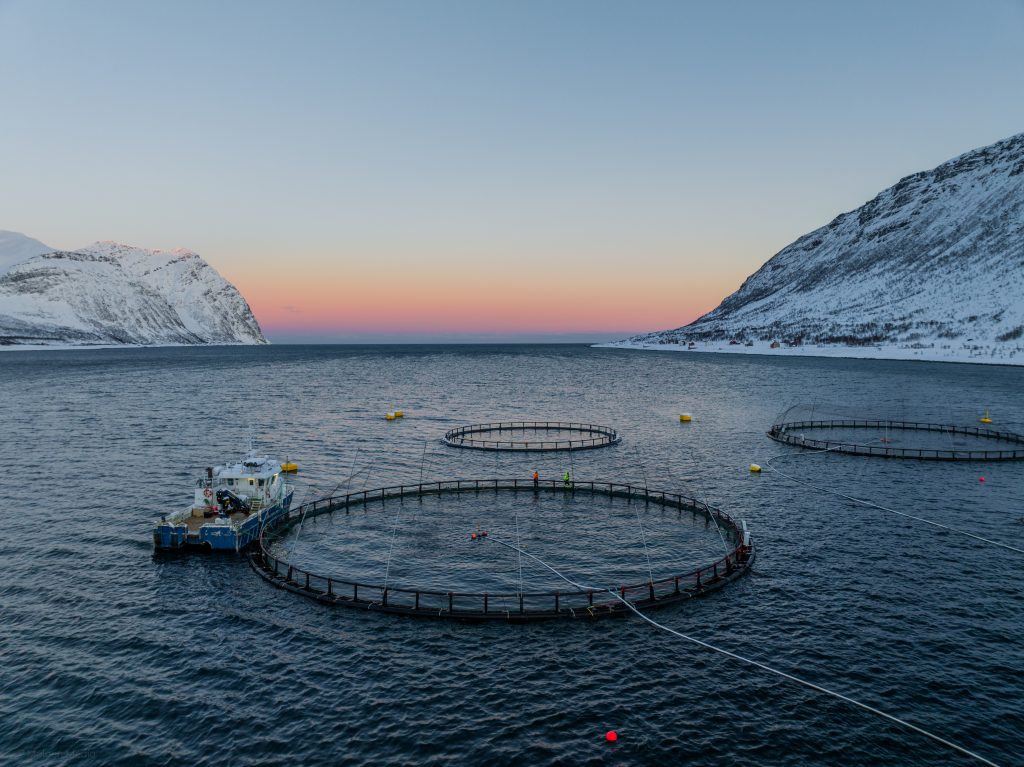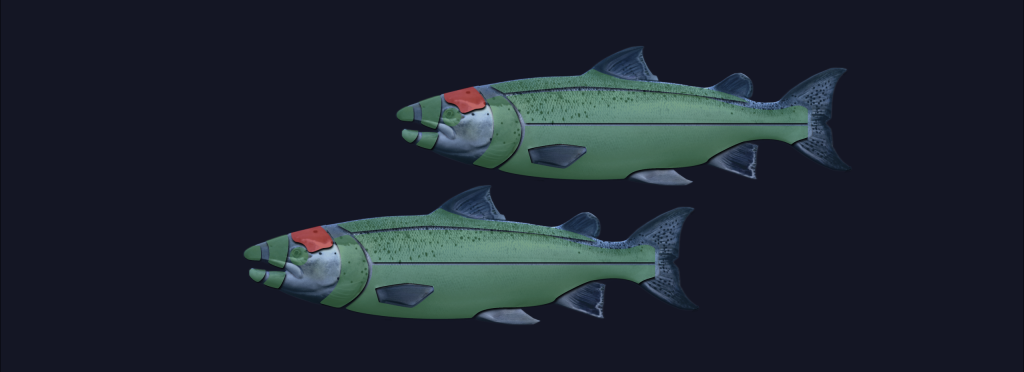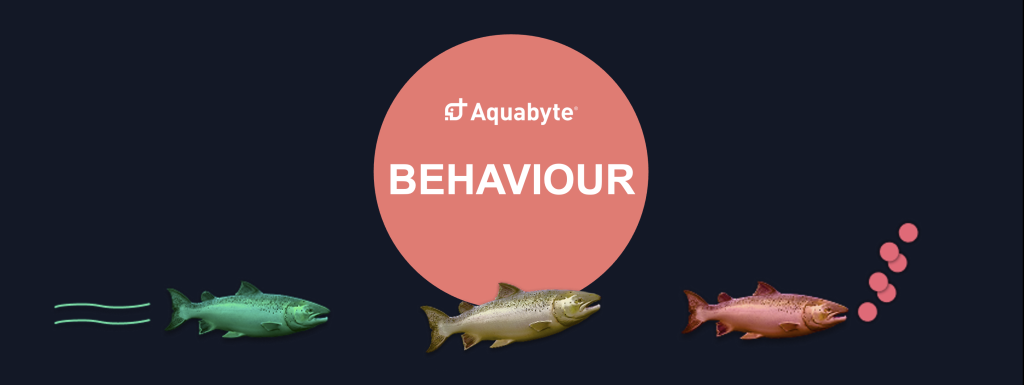Arnøy Laks is a fish farming company with a conscious approach to technology. They select solutions that offer direct benefits, while confidently bypassing those that don’t provide clear value. This also applies to technology that is almost standard within the aquaculture industry.
Article image: Moloen Media
Located on Arnøya at the outermost edge of the ocean, Arnøy Laks, like several other companies in the aquaculture industry, is the largest employer in the region. They are important for the development of the island and also employ many residents in the surrounding areas.
– Without us, there probably wouldn’t have been a new and modern ferry with more frequent departures to Arnøy. And the new ferry is important both for the island and for us. With aquaculture facilities, our own slaughterhouse, and a new fillet factory that will be completed in the spring, we depend on people being able and willing to work here.
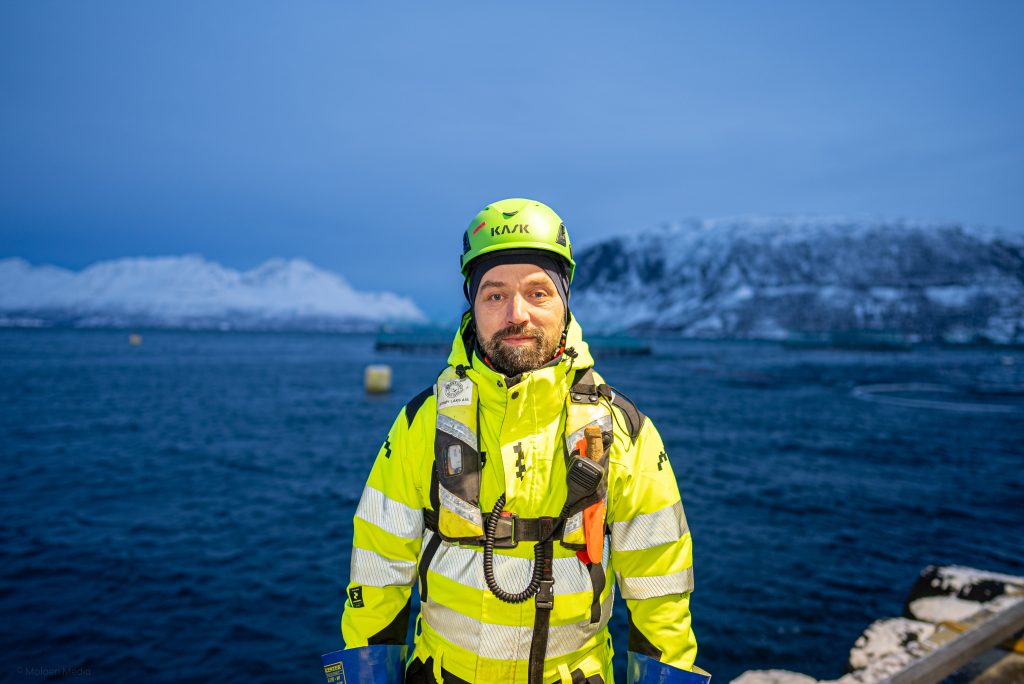
For us at Arnøy Laks, it is important to contribute and facilitate in the local community.
CONTRIBUTES TO THE LOCAL COMMUNITY
This statement is made by Jostein Bentsen. He started at Arnøy Laks as a part-time employee in the early 90s. The part-time job turned into a full-time job in 1997, and since 2002, he has been the Maritime Manager responsible for the aquaculture division of the company.
– For us at Arnøy Laks, it is important to contribute and facilitate in the local community so that more people want to work here, and perhaps settle here on Arnøy. We have built houses and apartments that are rented out to employees. Additionally, we support good initiatives here on the island, such as local sports clubs and associations.
The simplest and cheapest option would be to buy new ones. Instead, we choose to focus on reuse.
SUSTAINABILITY IS IMPORTANT
In addition to focusing on the local community, Arnøy Laks is also committed to environmental sustainability. And the sustainable approach is not always the cheapest:
– For example, take the nets we use in the aquaculture facilities. The simplest and cheapest option would be to buy new ones. Instead, we choose to focus on reuse. Servicing nets is more expensive than buying new ones, but it’s important not just to look at the price tag. That’s why we choose to repair what can be repaired instead of buying new, says Jostein.
FISH HEALTH IS ALSO SUSTAINABILITY
For Arnøy Laks, sustainability means more than just controlling chemicals, reducing power consumption, and reusing where possible.
– For us, sustainability also involves fish health. And to improve fish health, we must work on how and how much we handle the fish. And technology plays an important role in reducing the manual handling, emphasizes Jostein.
CAMERA SURVEILLANCE LETS THE FISH BE UNDISTURBED
Arnøy Laks was the first aquaculture company in Norway to implement a full-scale solution for digital monitoring of fish in surface pens. In practice, this means that they have a camera system in each pen, which, using artificial intelligence and machine learning, automatically counts lice, estimates weight and growth, and monitors fish health.
– The main idea is to let the fish be undisturbed in the pen. Previously, we had to take the fish out of the pens to count lice. The same applied when we needed to check growth and health. All of this involved unnecessary and harmful handling. Now that we have the Aquabyte system in each pen, we can monitor the fish much better, and without harming them, says Jostein.
Automatic lice counting was our main focus in the beginning. Now, monitoring fish health has become equally important.
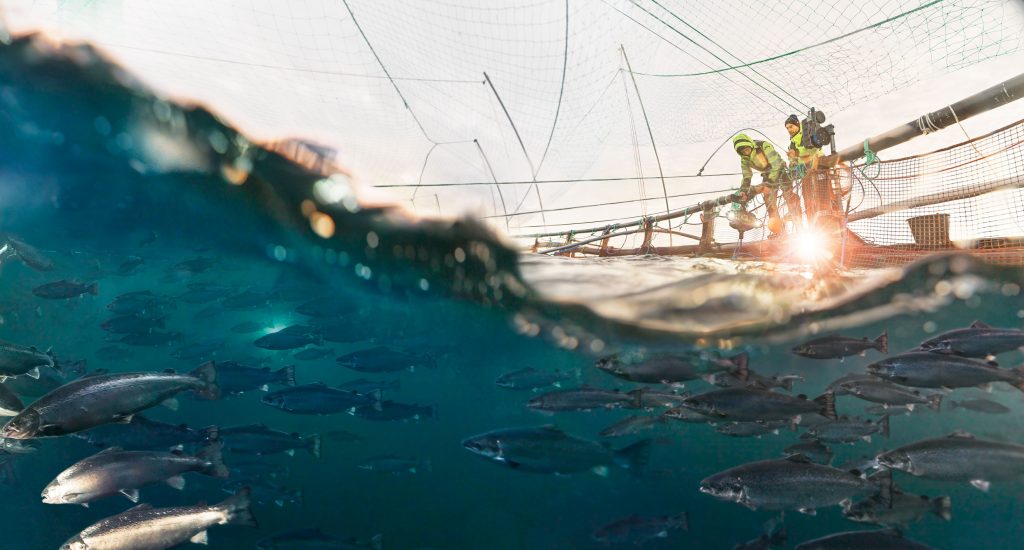
IT STARTED WITH AUTOMATIC LICE COUNTING
When Arnøy Laks implemented full-scale digital monitoring, automatic lice counting was the primary reason. However, after implementation, the focus has shifted. The system provides them with insight into other important areas.
– Automatic lice counting was our main focus in the beginning. Now, monitoring fish health has become equally important. We use the information the system provides us to document health, assess wound development, and monitor growth. This is crucial for us in production planning and provides us with more information to make decisions.
Jostein and Arnøy Laks see the value in gathering as much data from the cages as possible. Not only on lice numbers but also on the well-being and growth of the fish.
– For us, it’s about collecting all available information, documenting, and using the data we receive. It’s rare that too much data is negative, concludes Jostein, and continues: With more information available, we’ve been able to change our production strategies.
We don’t see the value of using feeding cameras, so it doesn’t matter if most others in the aquaculture industry use them.
FEEDING WITHOUT A FEEDING CAMERA
As one of the few fish farmers, Arnøy Laks has chosen not to use feeding cameras. Despite this, they score high on feed conversion ratio compared to farmers who use traditional feeding cameras as support.
– This is a conscious choice for us. We don’t see the value of using feeding cameras, so it doesn’t matter if most others in the aquaculture industry use them. Our feeding is controlled by surface activity and fish behavior, not by how much pellets sink to the bottom. This method gives us better control over how much feed is distributed through the system, and we can stop feeding more quickly when the fish are no longer eating, says Jostein.
Despite using unconventional methods for monitoring feeding according to today’s industry standard, Arnøy Laks is not averse to considering new methods in this area as well:
– We continuously evaluate new technologies and opportunities. Water feeding is one alternative under consideration. The challenge with this and other feeding technologies is that we lose visual control over the feeding process. However, here we see the possibilities that the Aquabyte system with cameras in each pen can provide.
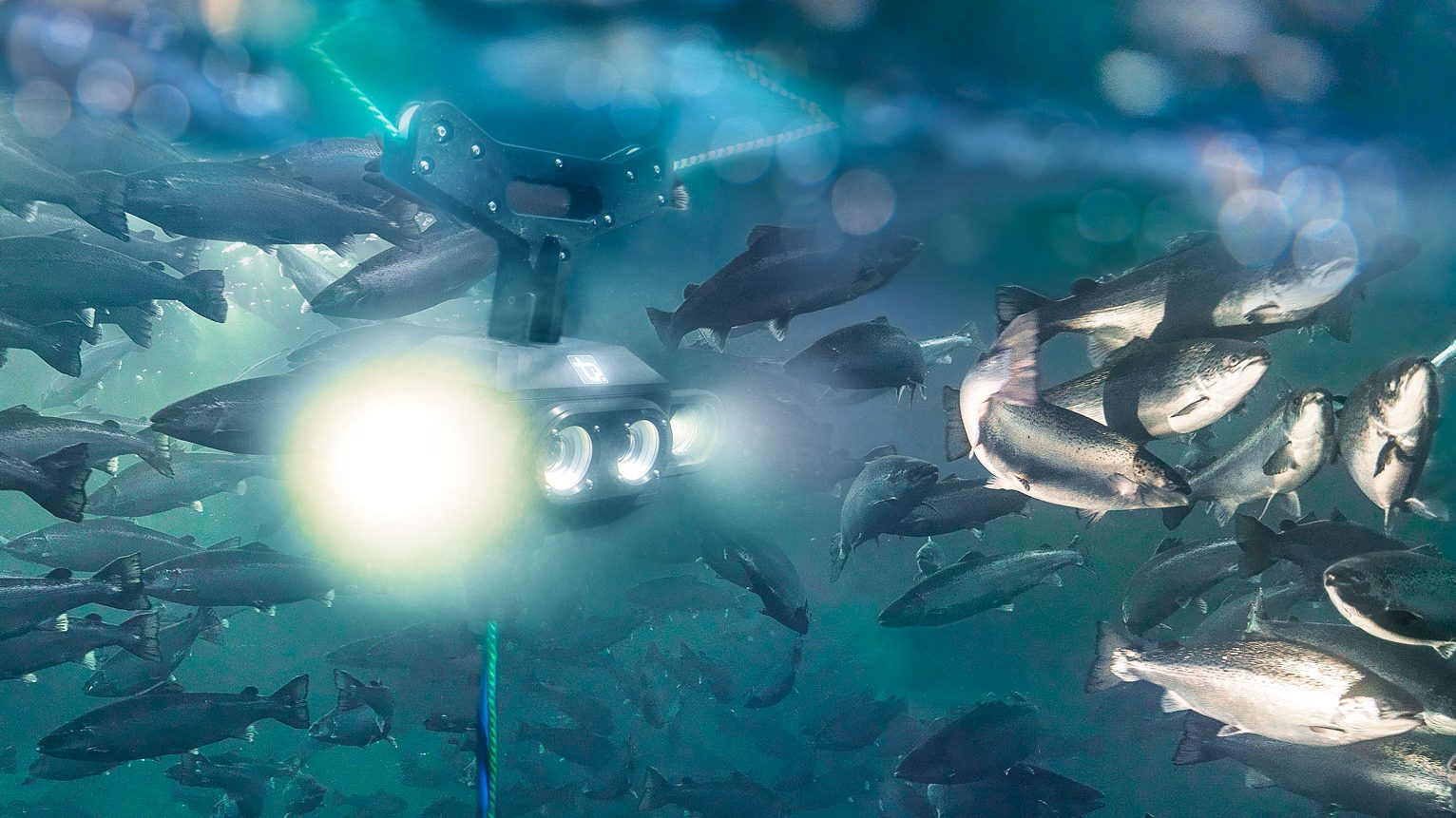
In the beginning, we conducted manual checks of lice, growth, and welfare because we were unsure of the accuracy of the data from the system. Now, we have learned to trust the technology.
PRIORITIZES TECHNOLOGY THAT PROVIDES DIRECT VALUE
As a company, Arnøy Laks makes unconventional choices. They do not use feeding cameras but have implemented digital monitoring in all pens. It’s like going directly from a steam-powered cart to an electric car.
– We are willing to adopt technology, but only if we see direct value in it. We invest in technology that we believe in, says Jostein, continuing: Implementing digital monitoring of fish in the pens was a transition for us. In the beginning, we conducted manual checks of lice, growth, and welfare because we were unsure of the accuracy of the data from the system. Now, we have learned to trust the technology. We conduct manual checks occasionally, but for the most part, we let the fish be in peace in the pens. This makes life easier for both people and fish, concludes Jostein.
TECHNOLOGY CAN ALSO HAVE OTHER POSITIVE IMPLICATIONS
Arnøy Laks emphasizes the importance of using the right technology, and Jostein sees that the choices they make in digitalization can also have other positive implications, in addition to increased knowledge about the fish in the pens.
– Young people today are interested in technology, and by investing in this, we remove some tedious routine tasks in production. We should certainly not overlook the fact that the technology we use may make us an even more attractive employer among young people in the future, concludes Jostein Bentsen at Arnøy Laks.
About Arnøy Laks
Arnøy Laks was founded in 1984 and is located on Arnøya in the northern part of Norway. With 90 employees and an annual turnover of 330 million NOK, the company is a significant contributor to the local community. Arnøy Laks is an integrated company that includes the entire production chain from smolt to its own harvest facility. The harvest facility also receives fish from other farmers in the region and has an annual production of 25,000 tons of salmon with a total market value of 1.4 billion NOK. The company will open a new fillet factory in 2024.
Arnøy Laks was the first Norwegian aquaculture company to enter into a full-scale agreement and now uses the Aquabyte system in all operational pens.



